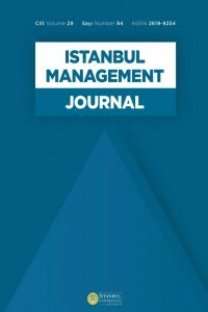Hızlı Otobüs Taşımacılığı İçin İstasyon Lokasyonlarının Belirlenmesine Yönelik Yaklaşımlar
Yüksek Hızlı Otobüs Taşımacılığı (HOT) metro gibi uzun vadeli yatırımlara göre daha hızlı hizmete alınabilir. Ayrıca, metro
sistemlerine benzer şekilde yüksek kapasitede yolculuk talebini karşılayabilirler. İstanbul’da Metrobüs özel ismi ile
çalışmakta olan HOT sistemi, İstanbul’daki yolculuk talebinin en yoğun olduğu bölgedeki ulaşım talebini karşılamaktadır.
Sistemin başarısı, sistemin genelleştirilmesi ile ilgili tartışmaları da beraberinde getirmektedir. Dolayısı ile HOT sisteminin
alternatif rotaları değerlendirildiğinde istasyonların nerelerde olması gerektiğinin tespit edilmesi araştırmacılar ve şehir
plancıları için bir araştırma konusu olarak ortaya çıkmaktadır. Çalışma kapsamında rotası belirli olan bir güzergah üzerinde
istasyon noktalarının nasıl tespit edileceğine yönelik Coğrafi Bilgi Sistemleri ile beslenen iki yöntem değerlendirilmiştir. Bu
yöntemlerden ilki ağırlıklandırılmış merkez noktaları arayan bir p-medyana dayalı matematiksel modeldir, diğer yöntem
ise kapsama alanlarına göre hesaplama yapan bir aşamalı bir sezgisel yöntemdir. Sezgisel yöntem, matematik modelin
büyük problem yapısında çözülmesi zor bir problem yapısına dönüşmesinden dolayı, ileriki çalışmalarda kullanılabilmesi
için tartışılmıştır. Sonuç olarak her iki yöntem de sonuç üretebilmiştir. Sezgisel algoritma, optimum sonuçlara yakınsamıştır
ve çözümü kolay bir yapıya sahip olduğunu göstermiştir
Anahtar Kelimeler:
İstasyon yeri seçimi, Hızlı otobüs taşımacılığı, Coğrafi Bilgi Sistemleri (CBS), Toplu ulaşım şehir planlama
Station Location Selection Approaches for a New Bus Rapid Transport Line
Bus Rapid Transport (BRT) systems can be put into service with lower costs in comparison to metro systems. In addition,
they can meet the demand for high-capacity travel, similar to metro systems. In Istanbul, Metrobus, which is an example
of BRT, covers the highest portion of the transportation demand in its region. The success of the system has provoked
discussions about the new routes of the system in the city. Thus, where to locate the new BRT line and its stations emerges
as a research question for academics and city planners. In this study, two different methods, which are supported by
GIS/Spatial information, are discussed to analyze where to locate the stations of a new BRT line. The first method is
an adopted weighted p-median-based mathematical model that deals with a line instead of a network. The second
approach is a heuristic algorithm considering the demand of coverage according to the covered population in an iterative
structure. As the result, both approaches produce outcomes for station locations. The heuristic algorithm converges to
the optimum results and shows that it is able to reach in a simple analysis structure.
Keywords:
Station Location selection Bus rapid transport (BRT), Geographic Information Systems (GIS), Public transportation, City planning,
___
- Alpkokin, P., & Ergun, M. (2012). Istanbul Metrobüs: first intercontinental bus rapid transit. Journal of Transport Geography, 24, 58–66.
- Çancı, M. & Önden, İ. (2013). Sürdürülebilir otobüs sistemi oluşturmak için başarı kriterlerinin belirlenmesi. Transist 2013. İstanbul, Türkiye.
- Cervero, R., & Kang, C. D. (2011). Bus rapid transit impacts on land uses and land values in Seoul, Korea. Transport Policy, 18(1), 102–116.
- Characteristics of BUS RAPID TRANSIT for Decision Making. (2011). Federal Transit Administration. Deng, T., & Nelson, J. D. (2013). Bus Rapid Transit implementation in Beijing: An evaluation of performance and impacts. Research in Transportation Economics, 39(1), 108–113.
- Diaz, R. (2004). Characteristics of Bus Rapid Transit for Decision-Making.
- Global Bus Rapid Transit Data. (n.d.).
- Kariv, O., & Hakimi, L. (1979). An Algorithmic Approach to Network Location Problems. II: The p-Medians. SIAM Journal on Applied Mathematics, 37(3), 539–560.
- Levinson, H., Zimmerman, S., Clinger, J., & Rutherford, G. (2002). Bus Rapid Transit: An Overview. Journal of Public Transportation, 5(2), 1–30.
- Mladenović, N., Brimberg, J., Hansen, P., & Moreno-Pérez, J. A. (2007). The p-median problem: A survey of metaheuristic approaches. European Journal of Operational Research, 179(3), 927–939.
- Munoz-Raskin, R. (2010). Walking accessibility to bus rapid transit: Does it affect property values? The case of Bogotá, Colombia. Transport Policy.
- Senne, E. L. F., & Lorena, L. A. N. (2000). Lagrangean/surrogate heuristics for p-median problems. In M. Laguna & J. L. Gonzalez Verdale (Eds.), Computing tools for modeling, optimization and simulation (pp. 115–130). Berlin, DE: Springer.
- Shamsipour, H., Shamsipour, H., Sandidzadeh, M. A., & Yaghini, M. (2012). Solving capacitated p-median problem by a new structure of neural network. International Journal of Industrial Engineering: Theory, Applications and Practice, 19(8), 305–319.
- TÜBİTAK TÜSSİDE. (2016). Ulaşımda sosyo-ekonomik etkileşim çalıştayı raporu.
- TÜBİTAK TÜSSİDE. (2016a). İstanbul için yeni hızlı otobüs taşımacılığı sistemleri raporu. İstanbul.
- TÜBİTAK TÜSSİDE. (2016b). Marmaray ve M1 sistemi proje etki analizi raporu. Gebze-Kocaeli.
- Türkiye İstatistik Kurumu. (2016). Adrese dayalı nüfus sisteminden elde edilen il bazlı nüfus bilgileri.
- Yazici, M., Levinson, H., Ilicali, M., Camkesen, N., & Kamga, C. (2013). A bus rapid transit line case study: Istanbul’s metrobüs system. Journal of Public Transportation, 16(1).
- Başlangıç: 1975
- Yayıncı: İstanbul Üniversitesi İşletme Fakültesi İşletme İktisadı Enstitüsü
Sayıdaki Diğer Makaleler
İşıl MENDEŞ PEKDEMİR, Aygül DÖNMEZ TURAN
Hızlı Otobüs Taşımacılığı İçin İstasyon Lokasyonlarının Belirlenmesine Yönelik Yaklaşımlar
İsmail ÖNDEN, Nurbanu DOĞAN, Fahrettin ELDEMİR
Ulusal Kültür ve Girişimcilik İlişkisinde Kurumların Rolü
Çiğdem VATANSEVER, Nevin KILIÇ, Gülesra DİNLER
Kamu Kurumlarında Toplam Kalite Yönetimi Uygulamalarının Deming Yönetim Metodu ile Analizi
